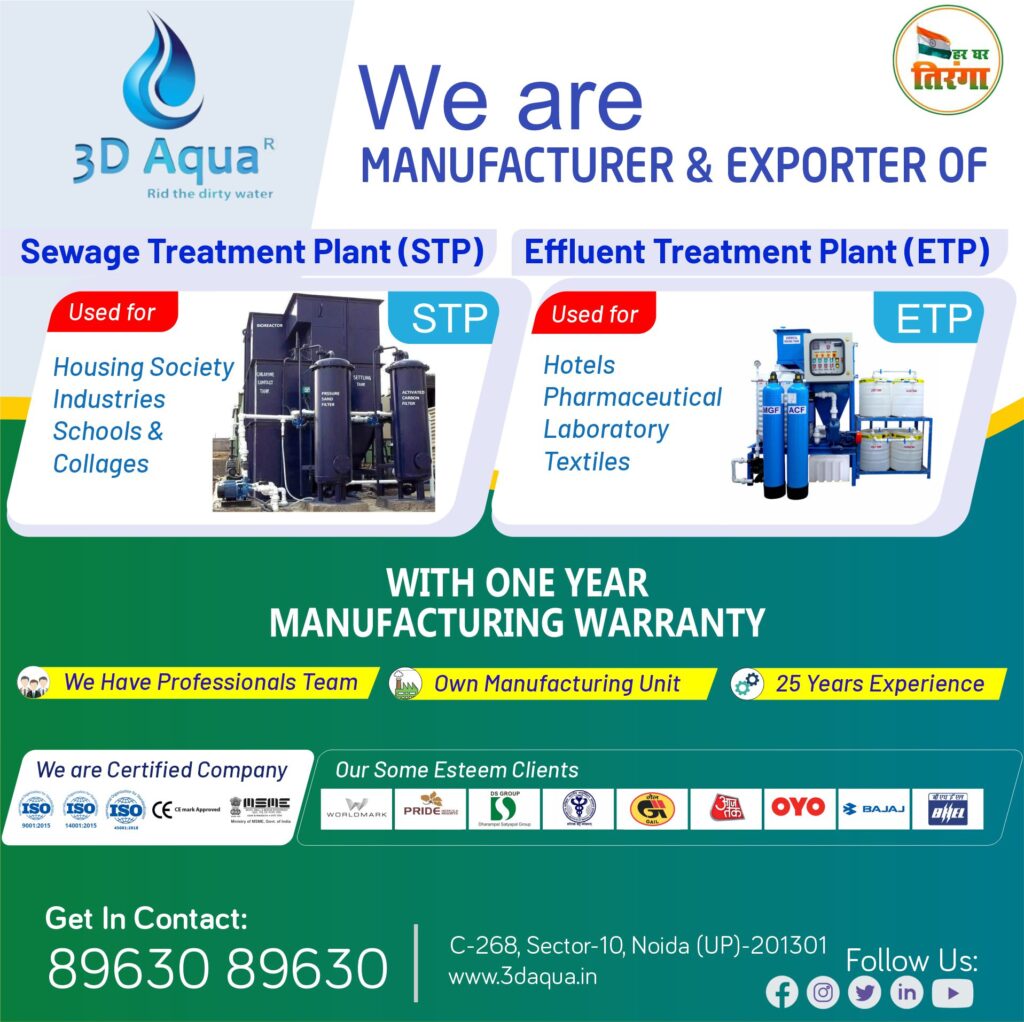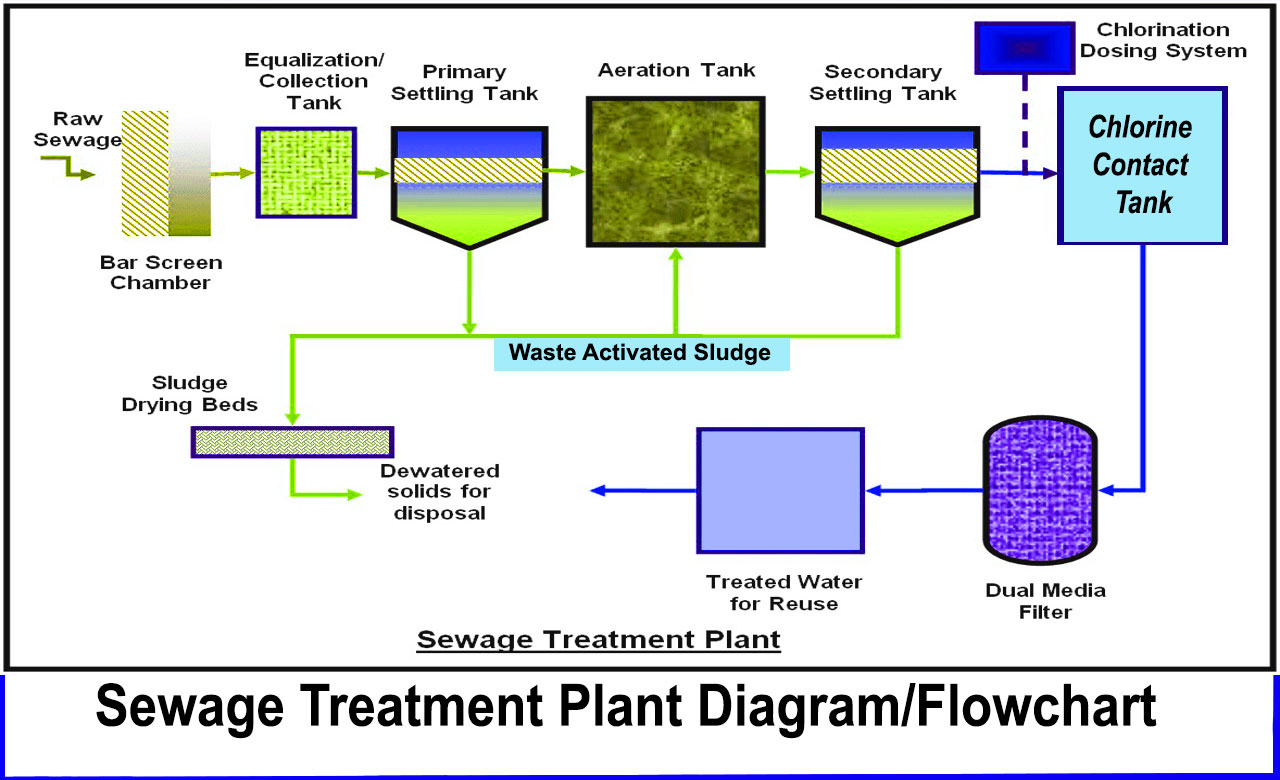How a Sewage Treatment Plant Works understand with diagram or flowchart
A sewage treatment plant is an essential facility designed to treat and purify wastewater from residential, commercial, and industrial sources before it is released into the environment.
This process ensures that the water is clean and safe, meeting environmental regulations and protecting public health.
Here’s a detailed look at how a sewage treatment plant operates, broken down into five key stages.

1. Movement of Sludge
The journey of wastewater begins as it flows through underground pipes from various sources—homes, businesses, and industries—into the sewage treatment plant.
In cases where gravity alone cannot move the wastewater efficiently, sewage pumping stations come into play. These stations use pumps to lift and transport wastewater to the treatment facility.
These pumps are especially crucial in areas with lower elevation or where direct gravity flow is impractical, such as in basements or remote locations.
2. Pre-Screening
Before the wastewater undergoes any treatment, it is essential to remove large debris and objects that shouldn’t be there.
This includes items such as diapers, sanitary napkins, plastic bags, and other non-biodegradable materials.
Pre-screening involves passing the wastewater through screens that capture these large particles and prevent them from entering the treatment process.
This step helps avoid damage to equipment and ensures a smoother treatment process.
3. Primary Settlement
In the primary settlement stage, the focus shifts to separating solid particles suspended in the wastewater.
The wastewater is directed into large sedimentation tanks or basins, often referred to as primary clarifiers.
Here, gravity allows heavier particles to settle at the bottom, forming a layer of sludge.
This sludge is periodically removed and treated separately. Meanwhile, the relatively clearer water moves on to the next stage of treatment.
4. Secondary Wastewater Treatment
Once the visible debris and large particles have been removed, the next step is to address the dissolved and organic matter. This is achieved through biological treatment processes.
The wastewater is transferred to aeration tanks where air is introduced to promote the growth of microorganisms, particularly bacteria.
These bacteria consume organic pollutants, breaking them down into simpler, less harmful substances.
Following aeration, the water passes through secondary clarifiers or filter beds where additional bacteria further digest the remaining organic material.
5. Tertiary Treatment
The final stage, tertiary treatment, is where any remaining impurities are addressed. The level of treatment required depends on the quality of the effluent and its intended use.
For instance, treated wastewater used for recreational purposes may require additional disinfection to remove pathogens.
Processes like filtration, chemical treatment, and additional biological treatment may be employed to remove specific contaminants such as phosphorus and nitrates, which can lead to nutrient pollution in receiving water bodies.
Frequently Asked Questions
1. Why is pre-screening important in wastewater treatment? Pre-screening is crucial because it removes large debris and non-biodegradable items that could damage treatment equipment or interfere with the treatment process. This step ensures that the treatment plant operates efficiently and reduces maintenance costs.
2. What happens to the sludge produced during primary settlement? The sludge collected during primary settlement is usually thickened and further treated to reduce its volume and odor. It may be processed through methods such as anaerobic digestion, composting, or incineration before being disposed of or used as fertilizer.
3. How does secondary treatment differ from primary treatment? Primary treatment focuses on removing larger particles and suspended solids through sedimentation, while secondary treatment uses biological processes to break down dissolved organic matter and further purify the water.
4. What is the purpose of tertiary treatment? Tertiary treatment is the final step aimed at polishing the treated water to remove any remaining contaminants or nutrients. This step ensures that the water meets high-quality standards before being released into the environment or reused.
5. How do sewage pumping stations work? Sewage pumping stations use mechanical pumps to lift wastewater to a higher elevation or through long distances to ensure it reaches the treatment plant. They are essential in areas where gravity alone cannot facilitate effective wastewater movement.
For more information on wastewater treatment or advice on improving your home’s sewage management, consider reaching out to specialized companies like 3D Aqua. They offer expertise in sewage systems and provide a range of pumping stations designed to ensure reliable wastewater transport and treatment.
By understanding these stages and processes, we can better appreciate the complex operations behind maintaining clean water and protecting our environment.

#3DAqua #stp #etp #watertreatment #MSME

